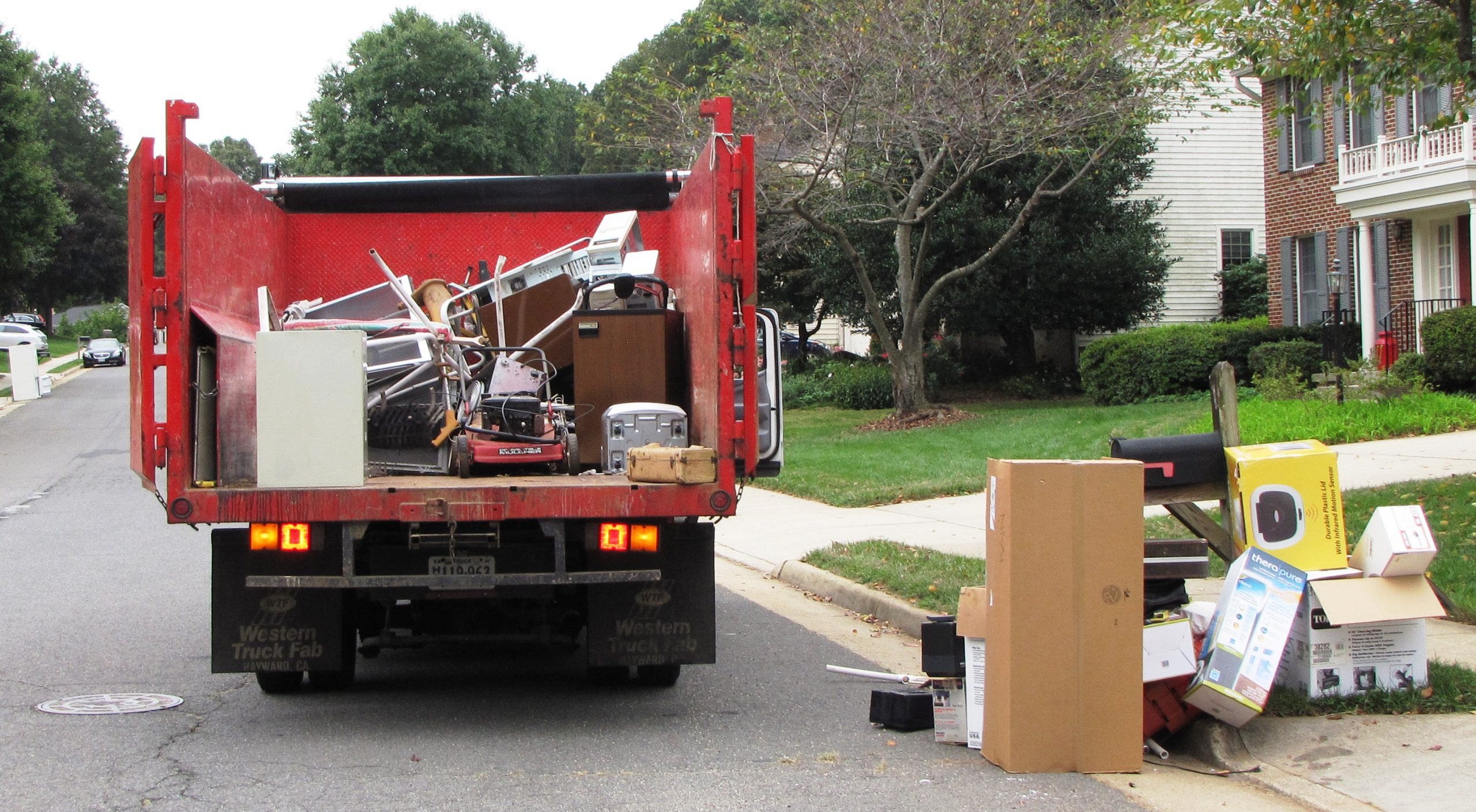Residential Junk Removal Atlanta: Hassle-Free and Convenient Solution
Wiki Article
Specialist Waste Monitoring Techniques Tailored for Industrial Settings
Customizing waste monitoring strategies to suit the one-of-a-kind demands of commercial setups is not just advantageous however necessary for preserving functional effectiveness and environmental sustainability. The quest for enhanced waste management in commercial setups entails a meticulous technique that balances regulative compliance, cost-effectiveness, and ecological obligation.Value of Tailored Waste Monitoring
Customized waste monitoring techniques are crucial in commercial setups to enhance source usage and decrease environmental effect. Industrial procedures create a significant quantity of waste, ranging from strong byproducts to chemical contaminants, posing a threat to the setting otherwise managed successfully (Furniture removal Atlanta). By personalizing waste administration strategies to match the details needs and difficulties of each industrial center, firms can not only adhere to policies yet additionally enhance operational efficiency and sustainabilityOne secret element of customized waste monitoring is conducting a complete waste evaluation to determine the kinds and volumes of waste generated. This analysis permits companies to apply targeted remedies such as reusing programs, waste partition methods, and waste-to-energy efforts. By recognizing the structure of their waste streams, industrial centers can establish cost-effective strategies to minimize waste generation at the resource, bring about lasting environmental advantages.

Types of Hazardous Waste
What are the various classifications of industrial waste frequently produced in manufacturing processes? Industrial waste can be classified into several major classifications based on its composition and attributes.One more common kind of hazardous waste is non-hazardous waste, which encompasses materials like paper, plastics, and packaging waste. While non-hazardous waste may not pose prompt threats, correct management is still important to minimize land fill usage and promote recycling and sustainability practices.

Hazardous Waste Handling Treatments
Effective management of contaminated materials in commercial setups requires strict adherence to developed managing procedures to reduce threats and guarantee ecological safety and security. Unsafe waste handling treatments entail a number of key steps to lessen the possible effect on human health and the setting. First of all, proper recognition and categorization of hazardous waste are crucial. This includes determining the characteristics of the waste to ascertain the ideal handling, storage, and disposal methods.Second of all, when recognized, contaminated materials needs to be thoroughly set apart from non-hazardous waste to avoid contamination and make sure proper therapy. Storage of harmful waste should follow regulations pertaining to containment, labeling, and compatibility to stop leaks, spills, or other occurrences that can endanger workers or the setting.
In addition, handling treatments need to consist of using personal safety devices, employee training, and emergency situation action methods. Regular evaluations, tracking, and paperwork of contaminated materials handling tasks are vital to preserving conformity and identifying locations for improvement. By complying with these structured treatments carefully, commercial facilities can properly take care of contaminated materials and maintain their dedication to ecological stewardship.
Carrying Out Reliable Reusing Practices

To apply efficient reusing methods, industrial centers should first perform a waste audit to determine the types and quantities of recyclable materials generated in their procedures. Based upon this audit, firms can after that develop marked reusing top tier junk removal stations, provide proper training to employees on correct sorting techniques, and work together with trusted recycling partners for the collection and handling of products. Additionally, establishing certain recycling goals, tracking progression, and on a regular basis communicating with team about the relevance of recycling are necessary steps to make sure the success and sustainability of reusing efforts in industrial settings.
Tracking and Constant Enhancement
To guarantee the efficiency and sustainability of waste administration approaches in commercial setups, the implementation of durable monitoring and continuous improvement processes is important. Tracking involves tracking key efficiency indicators (KPIs) such as waste generation prices, reusing percents, and disposal costs. Frequently assessing these metrics allows services to recognize areas for renovation and gauge the success of carried out waste monitoring campaigns.Continuous enhancement is necessary for fine-tuning processes in time. It includes analyzing keeping an eye on data, recognizing inadequacies, and executing modifications to optimize waste monitoring techniques additionally. This repetitive method fosters a society of recurring improvement and innovation within the company.
Utilizing modern technology like waste monitoring software and IoT sensing units can improve checking efforts, providing real-time data for informed decision-making. Worker training and engagement additionally play a vital duty in making sure the success of monitoring and constant improvement efforts, as frontline staff are commonly vital players in waste monitoring procedures.
Conclusion
Finally, customized waste management techniques are essential for commercial settings to properly deal i thought about this with different types of waste, including dangerous products. By executing efficient reusing practices and continually surveillance and improving waste management processes, sectors can lessen their environmental effect and make certain compliance with laws. It is essential for companies to focus on waste management to shield the atmosphere and advertise sustainability in their operations.Report this wiki page